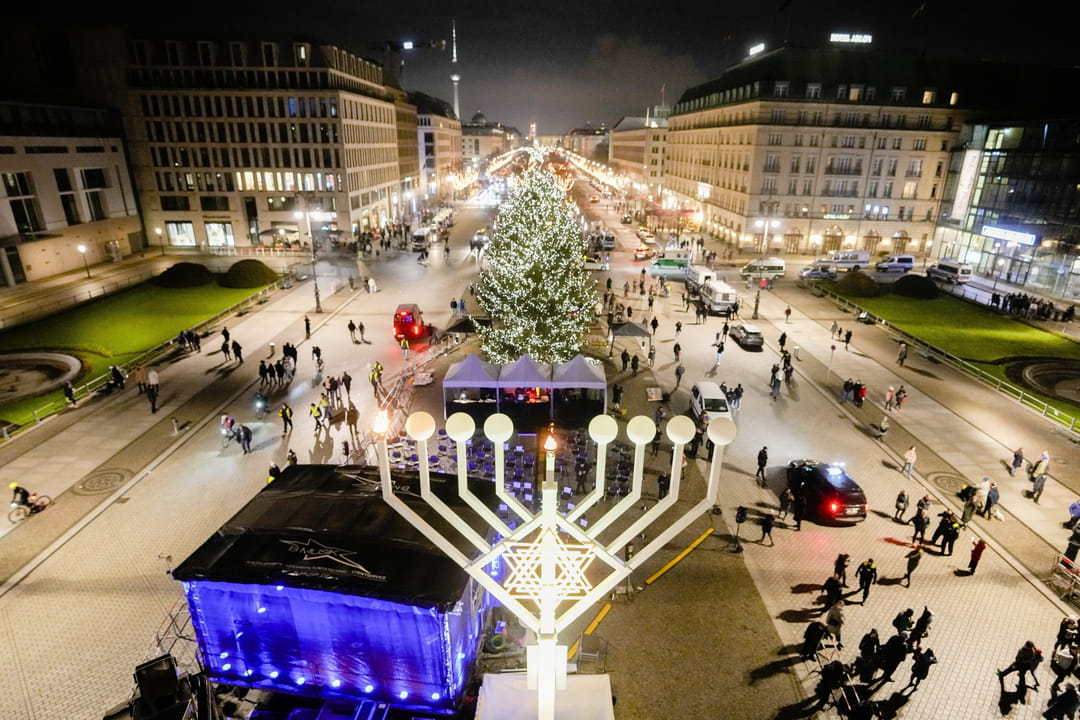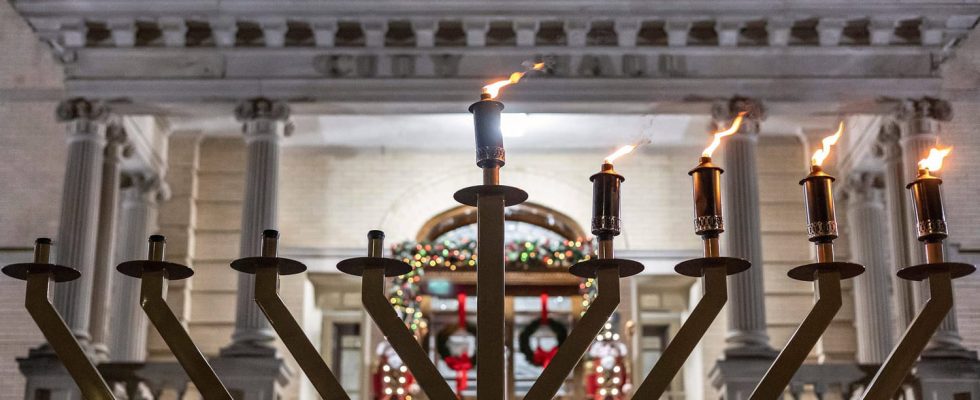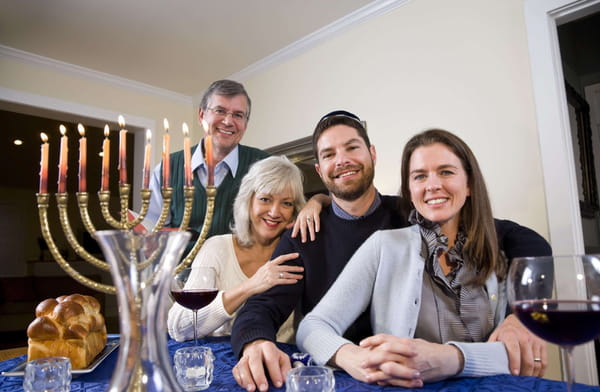Dates, origin, meaning… As Hanouka 2023 begins this Thursday, Linternaute.com offers you a file on the Jewish “festival of lights”.
[Mis à jour le 5 décembre 2023 à 22h31] If we no longer count the films and series that refer to Hanukkah, also spelled Hanukkah, do you know what practicing Jews actually celebrate during this major holiday of the Jewish religion? While Hanouka 2023 begins this Thursday, December 7 and ends eight days later on Friday, December 15, Linternaute.com offers you a file to understand why the dates of this celebration vary from one year to another, but also from where it originates and what its meaning is for practicing Jews. Story of the miracle of lights, date, prayers, “Happy Hanouka” wishes… Navigate the page using the summary opposite.
The Jewish celebration of Hanukkah is celebrated over eight days, from the 25th of the month of Kislev to the 2nd of the month of Tebeth in the calendar Hebrew. Generally, this festivities slot corresponds to a week in the month of December in the Gregorian calendar currently used in our regions, and is located not far from Saint Nicholas Day on December 6. As Hanukkah takes place at the very beginning ofwinter (or late autumn) shortly before Christmasshe has often been seen as the “Advent of Israel”, contextualizes the French poet of Jewish and Israeli origin Claude Vigée in the work “A basket of hops”. The first candle of the Hanukkah celebration is lit the day before the 25th of Kislev. A central candle holder then makes it possible to animate, one day after another, the lights of the eight other branches.
In 2023, Hanukkah takes place from Thursday December 7 to Friday December 15. The celebration therefore takes place several months after Yom Kippur, or Day of Atonement, considered by believers as the “holiest of Jewish holidays” and celebrated in 2023 on September 24 and 25 (see our special file Yom Kippur). In 2016, the Jewish Festival of Lights began on Christmas Eve (!), a Saturday, in the middle of shabbat.
Symbolic, the act of gradually lighting the traditional candlestick or making dishes with oil (the “latkes”, potato pancakes; and other donuts) for Hanukkah commemorate the “miracle of the vial of oil”. For believers in Judaism, this miracle took place 23 centuries ago, after the rededication of the Temple of Israel by the Jews. The latter then just recovered it, following an unexpected victory over the Greco-Syrian troops of Antiochus Epiphanes, who sought to subdue them. In the Jewish story, thanks to a small vial unearthed as best as possible far from the temple, a candlestick lights up the place of worship for eight days compared to one normally.
What rituals are on the program of the Jewish liturgy? The Hanukkah interlude is made up of blessings and songs, dishes fried in oil, but above all, the famous traditional Jewish candlestick. Called “menorah”, this nine-branched object has a very particular resonance. Every evening of this week of the “Jewish festival of lights”, Jewish believers light one of the branches. More precisely, they illuminate the first on the eve of the first full day of Hanukkah, which is the evening of December 6 this year. By lighting their menorah a little more each day, Torah practitioners commemorate “the miracle of lights”.
During Hanukkah, the usual liturgy does not give rise to an additional prayer service: without a holy character and non-holiday except in Israel, this celebration is in fact not linked to any prayer ritual indicated in the Bible. It is said to be rabbinical and not biblical. But several readings are added to the ordinary liturgy, varying over time, to signal that Hanukkah is taking place. At the synagogue, we therefore begin to recite very particular prayers such as Al Hanissim, a blessing integrated into the Amida, the prayer of the morning services but also the Birkat Hamazon, a Jewish prayer after a meal; the Hallel, read in its entirety every day, with the value of praise and thanks and used for joyful Jewish holidays; or even the reading of very specific passages from the Torah, like that on the sacrifices made at the time of the inauguration of the Temple. The latter had then just been returned to the Jews after they had regained their independence from the Greeks, in the 2nd century BC.

How do you wish Hanukkah? You can say “Hag Hanouka sameah” or “Hag sameah” for short, which means “Happy Holiday” or “Hanouka samear” (“Happy Hanouka”). And if you want to go further, offer a menorah to your friend or boyfriend celebrating Hanukkah, this inexpensive traditional candlestick, and the candles that go with it. Making donuts, topped with mint tea, is also a special treat during the Festival of Lights. But don’t panic: for each “edition” of these festivities, you have eight days to make a Hanukkah surprise for the loved one(s) who may be concerned…

Celebrations of the Jewish holiday of Hanukkah in future years will take place on very different dates from each other. In 2024: from Wednesday December 25 to Thursday January 2; in 2025: from Sunday December 14 to Monday December 22; in 2026: from Friday December 4 to Saturday December 12.

